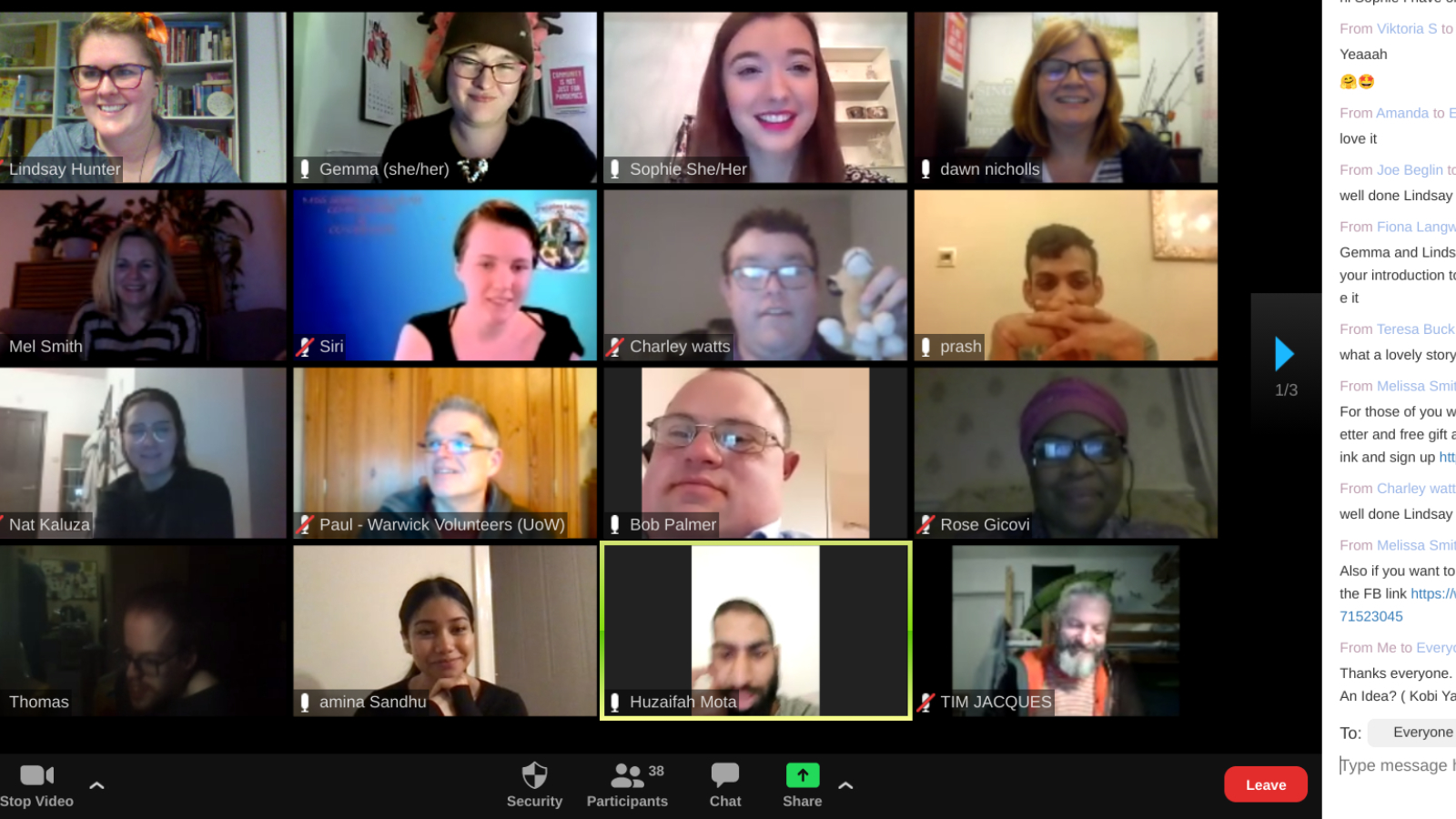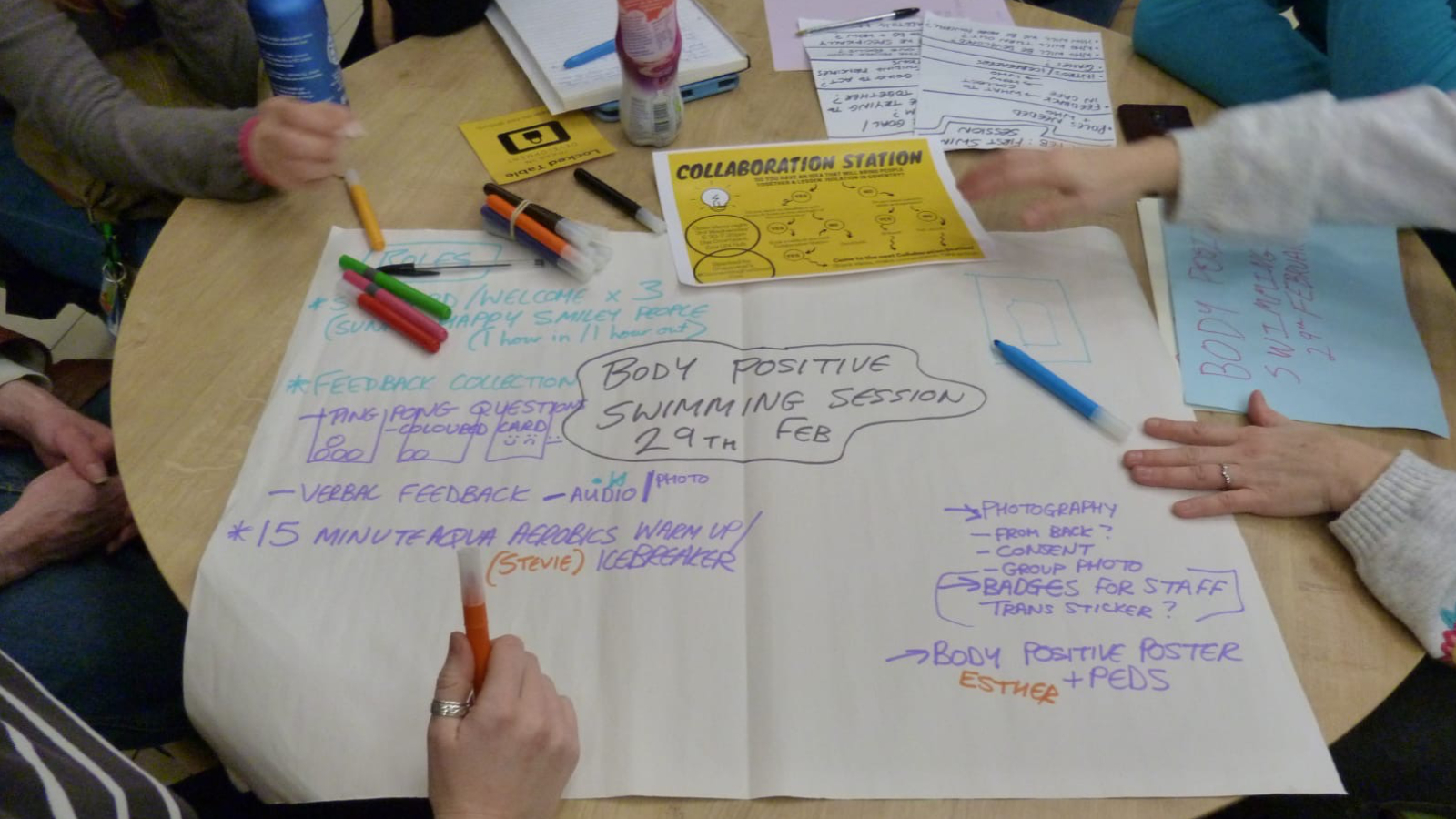Voices
A lesson on building the institutions for the futures we seek
How we build relationship centred organisations.
Stephanie Wong | 26 Apr 2021

Image credit: Act Build Change.
Connecting for Good (CfG) is a Grapevine Coventry and Warwickshire-led movement. Its purpose is to grow an ecosystem of connection across Coventry so that everyone in the city has the potential to act and shape their neighbourhoods. This work is built on Grapevine’s 25-year legacy of disability justice work, challenging the norms of who can and can not contribute.
This is the fifth blog from a series of seven sharing methods we are using that also return me to the fundamental lessons of community organising and building relational power.
Change comes from power, and power comes from organization. In order to act, people must get together.
The Alinsky model, one of the dominant teachings of community organising, is a broad-based organising model. It is a model that prioritises working through existing institutions in a given area, developing them to be more powerful relationally to strengthen communities and win on issues that matter to the people. The rationale is that faith, public and community institutions are often already organised. They have an internal leadership structure and an understanding of accountability and participation by the community. Finally, old power institutions have long histories and will likely continue to be around in the future, unlike projects or individuals - making the organising more sustainable.
But what do you do when these institutions ignore or do not respond to those calling for transformative change? Relying on institutions alone without challenging culture and systems will not deliver the gains we seek, especially if we try to shift the balance of power. Culture can take a generation to change, so our work in Coventry can only partially rely on what is already there. CfG both supports the old to change and creates new institutions, powered by the movement, better able to understand the ramifications of loneliness, oppression and the multidimensional shocks of COVID.

Grapevine is building the “organised infrastructure” or, in other words, the institutions they want to see. Their approach is abundantly collaborative, which can be disappointingly rare for our sector. They work with community leaders, local authorities, teachers, nurses, neighbours, artists and poets. Our approach is to work with anyone who wants to get stuck in and act on the movement’s values.
The rallying and focal point is Collaboration Station, Coventry’s open ideas night, where ideas are bounced around, supported by others and powered up for action. It also has the potential to become a place of congregation for mutual support and awareness with an equalising, playful and urgent atmosphere.
Collaboration Station is a great way to hear voices from across a range of backgrounds, and from people who are passionate about making real and lasting change in the city. It’s the spirit of Coventry embodied in practical action

It includes those too often ignored and intentionally invited institutions with organised money and power that are attracted to or could be, doing more to tackle isolation. These include the West Midlands Combined Authority, Good Gym, Coventry University, and local and cultural institutions. It is early days as the co-owned space works out its relationship with organised power.
I’m finally in contact with people who want to work together to build a better community and make their surroundings better. It’s so easy to feel hopeless and depressed about the world, and Collaboration Station makes you see the power of people and the power of coming together to make small (but huge) changes
It was AMAZING. My favourite Zoom experience so far. I’ve never experienced such participation and energy in a Zoom session of any kind. You can feel the community, connection, hope, empowerment, and, dare I say, love…
Creating the right atmosphere for Collaboration Station has always been a critical factor in its success. Until the pandemic, Collaboration Station had been hosted by local favourite venues Drapers Cafe Bar and Coventry University Hub. Understanding the ingredients to create the same atmosphere online for the energy and commitment to action to flow is vital.
Organising when you can’t knock on doors – lessons from Mel Smith, Organiser and Deputy CEO Grapevine
Building local connections, especially during this time of physical separation, is essential, not just to combat loneliness and isolation. If we get the conditions right, the virtual world can be as fruitful as in-person. These new relationships and connections bring forth resources, creativity and leadership. And so whether it be a 1-to-1, core group meeting or a large gathering, there is close attention paid to the following:
- Designing-in moments for a human connection online. E.g. sharing three things about ourselves as organisers in a pre-meet email, creating a collective photo album of what’s keeping us going right now, and contributing to a Changemaker playlist.
- Welcoming everyone - by name as they enter the virtual room and allow time for people to settle in, acknowledge friendly faces and encourage waves, shrieks, comments in the chat box and welcoming conversations.
- Create a transition moment – to take us from human connection to action. This could be a story or a grounding activity, e.g., lighting a candle as an alternative to chatting around a campfire.
- Designing signals of solidarity – if you agree, raise your hand, click your fingers, create a heart shape with your hands, sing together (Lean on Me is a firm favourite), and chant in unison, “Fired up, ready to go!”. Take a photo/video of this and share it afterwards.
- Modelling the leadership diversity you want to see in your communities and keep asking who still needs to be added to the table?
- Allowing for moments of collective reflection
Task
Reflection Questions
- Can everyone you work with within your organisation and broader communities articulate the vision and mission you are all working towards? Do you know if there is more work to do here? What does this look like?
- Who can access the space you have chosen for a meeting? Is that person ‘inconveniencing’ the room, or do they need support? Is spoken communication the only option here, or might there be others? (Questions inspired by Leah Lakshmi Piepzna-Samarsinha)
- Are the asks you call on institutions/ people in positional power challenging enough? What do you want to ask but are tentative? Is there some help you need to be more brave?
- How often do you talk about power? Are you supporting people in the room to know that it is their right to ask and work with people in significant positions of power to be accountable and act for the betterment of their neighbourhoods?
What is your strategy to stay sustainable in the changing and challenging moments?
This is the fifth in a series of posts about our work with Grapevine:
- How do we connect each other for good?
- Building powerful relationships
- I heard it on the grapevine
- Who is really leading?
- A lesson on how to build the institutions we need for the futures we seek
- Reflection as radical
- Biscuits, cuppas and megaphone actions